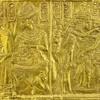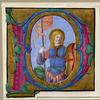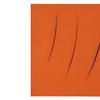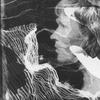The Multiple Masterpieces of Samuel Morse – His Art and Telegraph On View at Reynolda House Museum of American Art
- WINSTON-SALEM, North Carolina
- /
- March 13, 2017
Reynolda House Museum of American Art recently pulled back the curtain on two American masterpieces: a monumental painting titled Gallery of the Louvre and the telegraph – both the work of Samuel F. B. Morse. The new exhibition offers a rare look at a historical painting as well as a unique presentation of the diverse talents that made Morse one of America’s first Renaissance men. Samuel F. B Morse’s Gallery of the Louvre and the Art of Invention is on view at Reynolda House through June 4, 2017.
An Artist With Big Ideas
Morse was an accomplished artist in the early 1800s, noted for his portraiture and large-scale paintings, often in combination. His life-size Marquis de Lafayette, 1825, is installed at New York City Hall. Dying Hercules, 1812, 8 feet x 6 feet, hangs at Yale University Gallery of Art. The even grander 11 feet x 7.5 feet House of Representatives, 1822, is at the National Gallery of Art in Washington.
In 1831, Morse conceived of another large-scale painting, this one to introduce European masterpieces to American audiences decades before the founding of art museums here. His plan was to send the painting on tour to educate the public.
The artist spent months at the Louvre in Paris, painstakingly copying in miniature 38 Renaissance and Baroque masterpieces, including Leonardo da Vinci’s Mona Lisa, and work by Caravaggio, Rembrandt, Rubens, Tintoretto, Titian, and others. He then ‘installed’ the works in an imagined gallery arrangement on his 6 feet x 9 feet canvas, titling his work, Gallery of the Louvre. Morse paints himself in the center, tutoring a young student as she works on her own copy of one of the masterpieces before her. Morse’s friend, author James Fenimore Cooper, can be glimpsed with his wife and daughter in the left corner.
Gallery of the Louvre was one of Morse’s last paintings. Disheartened when the tour he envisioned did not materialize, Morse turned his attention to a new means of communication: the telegraph. He used wooden canvas stretcher bars from his studio to construct his earliest versions, a selection of which are on loan for the exhibition from Smithsonian’s National Museum of American History.
Worth the Wait
Over the years, Gallery of the Louvre has seldom been exhibited. It was last purchased in 1982, setting a then record for an American work of art. The Terra Foundation, which owns the painting, commenced a national tour in 2015, the much-delayed culmination of the creator’s intent. The installation at Reynolda House Museum is the only venue that has included both of Morse’s greatest creations: Gallery of the Louvre and the telegraph.
The Reynolda House Museum of American Art exhibition of Gallery of the Louvre also includes 19th-century paintings and prints from its renowned collection of American art along with old master prints on loan from Wake Forest University.
For more information, please visit reynoldahouse.org.
















